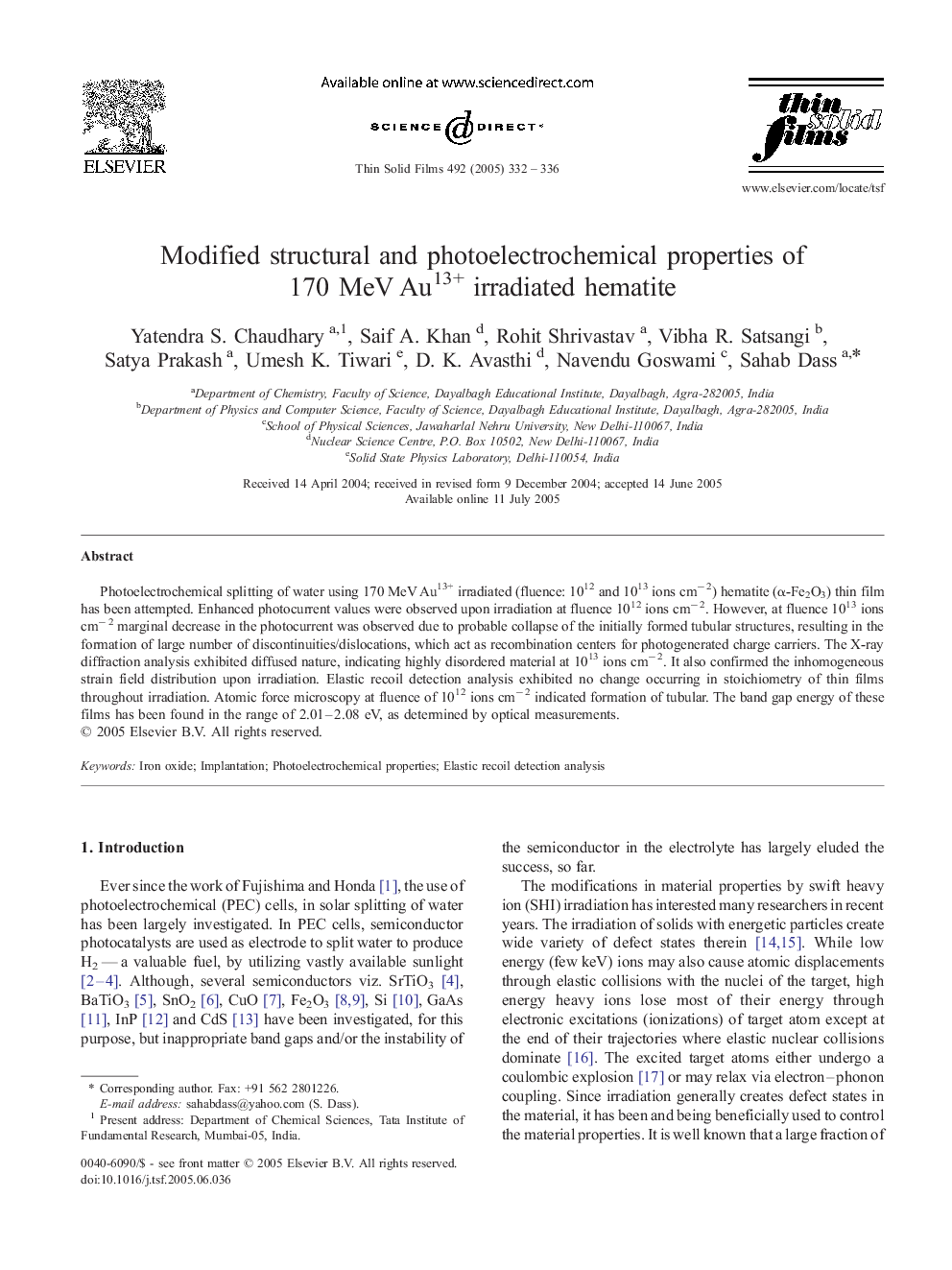| Article ID | Journal | Published Year | Pages | File Type |
|---|---|---|---|---|
| 9812161 | Thin Solid Films | 2005 | 5 Pages |
Abstract
Photoelectrochemical splitting of water using 170 MeV Au13+ irradiated (fluence: 1012 and 1013 ions cmâ 2) hematite (α-Fe2O3) thin film has been attempted. Enhanced photocurrent values were observed upon irradiation at fluence 1012 ions cmâ 2. However, at fluence 1013 ions cmâ 2 marginal decrease in the photocurrent was observed due to probable collapse of the initially formed tubular structures, resulting in the formation of large number of discontinuities/dislocations, which act as recombination centers for photogenerated charge carriers. The X-ray diffraction analysis exhibited diffused nature, indicating highly disordered material at 1013 ions cmâ 2. It also confirmed the inhomogeneous strain field distribution upon irradiation. Elastic recoil detection analysis exhibited no change occurring in stoichiometry of thin films throughout irradiation. Atomic force microscopy at fluence of 1012 ions cmâ 2 indicated formation of tubular. The band gap energy of these films has been found in the range of 2.01-2.08 eV, as determined by optical measurements.
Related Topics
Physical Sciences and Engineering
Materials Science
Nanotechnology
Authors
Yatendra S. Chaudhary, Saif A. Khan, Rohit Shrivastav, Vibha R. Satsangi, Satya Prakash, Umesh K. Tiwari, D.K. Avasthi, Navendu Goswami, Sahab Dass,
